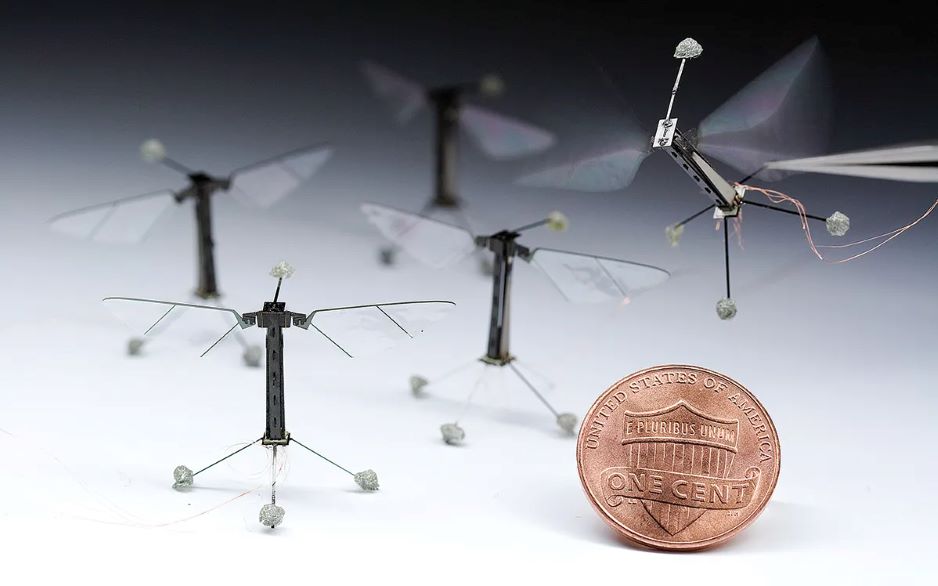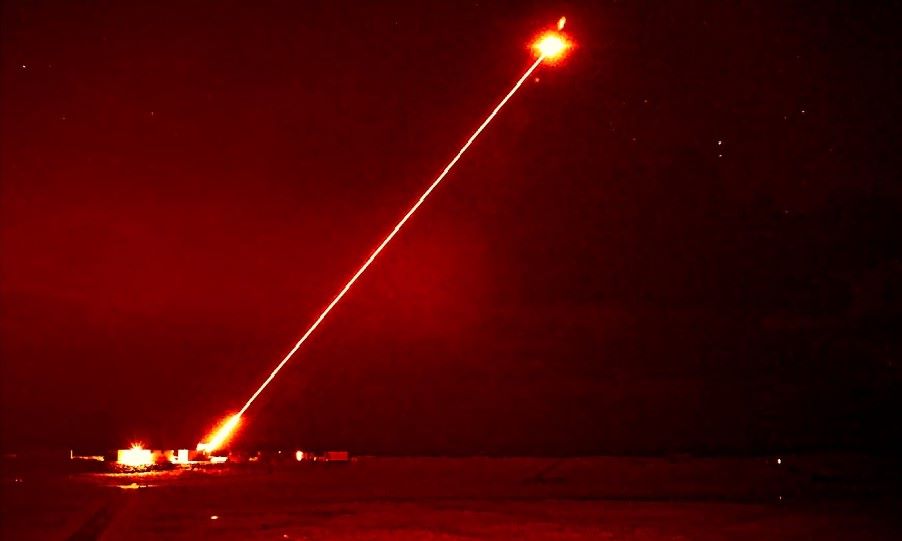Silent siege: How precision, AI, and invisible weapons are redefining conflict
The popular imagination of warfare is still dominated by the cataclysmic explosions of the 20th century: the thunder of artillery, the roar of bombers, and the existential dread of the nuclear mushroom cloud.
Yet, a quieter, more insidious revolution is unfolding in laboratories and defense offices worldwide. The future of conflict is shifting away from brute force towards a new paradigm defined by discrimination, cognitive dominance, and weapons that leave structures standing but societies crippled.
More to read:
Physicist: World War III will be fought with viruses, not bombs
So, forget about armadas you saw in the Star Wars; instead, there will be a silent siege waged with viruses, directed energy, swarms, and brain-machine interfaces, and it promises to be every bit as disruptive as the advent of the atomic bomb.
New center of gravity: the economic engine
Perhaps the most significant evolution is the editing in the very definition of the "battlefield." While physical terrain still matters, the decisive front is increasingly economic. The objective is no longer just to seize land or destroy enemy battalions, but to cripple their ability to fund, supply, and sustain the war effort itself.
The conflict in Ukraine has become a stark real-world laboratory for this doctrine. Ukraine’s sustained campaign of long-range drone strikes against Russia’s oil and gas refining capacity and defense manufacturing base – along with cyber operations – is a textbook example of strategic economic targeting.
More to read:
Russian intelligence has been testing acoustic weapon on American diplomats for a decade
The battlefield of the future is the refinery, the semiconductor fab, the financial network, and the global supply chain. Ukraine wants to achieve three objectives:
- strangle export revenue by damaging refineries in direct attacks on the primary source of foreign currency funding for Russia's war machine;
- disrupt domestic supply by crippling defense sector facilities to slow the production of missiles, drones, and ammunition, creating long-term logistical gaps; and
- increase the asymmetric cost by inflicting an unsustainable economic drain with cheap drones destroying high-value infrastructure and equipment.
So, why risk an expensive battle tank when you can deploy engineered microbes to consume the enemy's jet fuel reserves? Why bomb a factory when a cyber-attack can subtly alter the design specifications of the microchips it produces, rendering them useless?
Vulnerability of autonomous machines
This new era of warfare even calls into question the presumed dominance of autonomous machines and combat robots. Firstly, while they represent a formidable tactical advantage, they are far from invincible, creating a new frontier of asymmetric countermeasures. A multi-million-dollar robotic tank can be neutralized not by a costly missile, but by a "designer" chemical agent that dissolves its optical sensors or a polymer that seizes its joints.
More to read:
Google breaks a major promise and quietly removes pledge against AI for weapons and surveillance
A swarm of intelligent drones can be rendered useless by a localized high-power microwave burst that fries their electronics, or a subtler cyber virus that corrupts their shared network, turning them against each other or simply shutting them down.
The most significant threat, however, is the "uncontrolled AI" itself — a system whose decision-making logic is so inscrutable that it might misinterpret its mission parameters with catastrophic results, or one that can be psychologically manipulated or "poisoned" with corrupted data during its training phase.
This reality ensures that warfare will never be a simple contest of robotic strength, but a perpetual cycle of technological innovation and targeted counter-innovation, where the most advanced system can be felled by the simplest, most cleverly designed exploit.
End of mass destruction
The driving principle of the new era is the end of mass destruction as a primary tool. The strategic and political costs of collateral damage are now too high. Instead, the focus is on discriminate effects.
More to read:
OpenAI partners with U.S. Government to use AI for nuclear weapon security
Imagine a virus engineered to target a single individual based on their unique DNA, leaving their aides unharmed.
Or consider a swarm of insect-sized drones, each carrying a micro-charge, capable of infiltrating a building, killing a single individual or disabling a specific server room without breaking a window.
Or envision an electromagnetic pulse that silently fries the electronics of an enemy tank column, rendering it inert without a single casualty. These are not science fiction fantasies; they are the logical endpoints of current research in biotechnology, micro-robotics, and directed energy.
More to read:
China claims to be close to deploy beam weapon
These are five main directions of military research and primary focus of defense industries in countries with advanced economies:
1. The rise of the swarm: The most immediate change will be the shift from large, expensive, and manned platforms to distributed networks of cheap, autonomous systems. A single F-35 fighter jet, costing over $80 million, could be overwhelmed by a cloud of a thousand drones, each costing a few thousand dollars, operating as a single intelligent entity.
This "swarm intelligence" can conduct reconnaissance over hundreds of square miles, isolate high-value targets, and attack from all directions simultaneously, saturating and defeating even the most advanced defenses. This democratizes power, allowing smaller nations or even non-state actors to challenge military superpowers.

Insect-like robots by the Harvard Microbotics Lab. Credit: PopSci
Militaries worldwide already use small drones (not insect-sized, but hand-launched) for reconnaissance and strikes. The "insect" disguise is the next step in miniaturization and stealth.
2. Laser cannons. While drone swarms represent a distributed, intelligent threat, directed-energy lasers are emerging as the precise, cost-effective solution to counter them. The current generation of tactical lasers, ranging from 50 to 300 kilowatts, is already transitioning from prototype to deployment (such as the US Navy's HELIOS being integrated onto destroyers).
These weapons fire invisible beams that heat the target to the point of structural failure. Their value lies in their astonishing accuracy and low cost-per-shot; as long as there is electrical power, a laser can fire, intercepting a drone or mortar shell for a few dollars' worth of electricity versus a million-dollar interceptor missile.
Looking further, the next generation of laser weapons will be scaled up to megawatt-class power to engage higher-flying, faster-moving targets, including hypersonic missiles and low-earth orbit satellites.

A night shot by British military with the Dragonfire laser cannon. Credit: UK Defence Ministry
3. The cognitive battlespace: Future wars will be won not by who destroys the most tanks, but by who controls the enemy's perception and decision-making cycle — the so-called OODA Loop (Observe, Orient, Decide, Act). AI-powered cyber-attacks could disable a nation's power grid, financial system and logistics networks hours before a physical engagement, plunging cities into darkness and chaos, and triggering mass panic.
Deepfake technology - part of cyber-warfare - could generate a convincing video of a commander ordering a retreat, shattering unit cohesion. Psychological operations will evolve from dissemination of fakes to using precisely calibrated sonic or strobe weapons to induce disorientation and panic in enemy troops. The goal is to make the adversary surrender without a fight, having been defeated in the cognitive realm.
More to read:
Humans may not survive Artificial Intelligence, says Israeli scientist
4. The weaponization of biology and environment: Beyond assassinations, biotechnology will open fronts in logistical warfare. Genetically modified microbes could be designed to consume jet fuel or degrade the rubber in tires, grounding an air force or a column of armored vehicles with a seemingly innocuous contaminant.
Thinking bigger, the very environment could be turned against an adversary, with climate manipulation technologies potentially being used to induce droughts or floods in strategic regions.
5. Genetic targeting: Theoretically, a virus could be engineered to target a specific individual based on their unique DNA sequence. This would make it the ultimate assassin's weapon, leaving everyone else untouched. However, the scientific and logistical hurdles are immense. Viruses mutate, and ensuring it doesn't spread to others with similar genetics or jump species is a monumental challenge.
The concept of a bioweapon that targets a specific ethnic group based on genetic markers is a recurring trope. Most scientists agree this is currently not feasible due to the huge genetic diversity within any population and the shared genetics between communities.

Biological weapons are the oldest among "futuristic" weapons. Credit: FAS
Bioregulators could be the only feasible bioweapons at the moment. These are natural body chemicals that regulate functions like sleep, heart rate, and mood. In theory, they could be weaponized to induce a heart attack, stroke, or psychological breakdown in a target, making it look like a natural death. Their detection is extremely difficult.
The profound implications of "clean" war
While a future of "bloodless" and precise warfare may seem desirable, it presents a host of ethical, strategic, and legal nightmares.
• Lower threshold for conflict: If war no longer necessarily involves massive casualties and visible destruction, the political and moral barriers to initiating conflict may erode. Leaders may be more willing to launch a cyber-attack or a swarm strike, viewing it as a "surgical" option rather than an act of war, potentially leading to uncontrolled escalation.
More to read:
Scholar explains why Canada needs its own nuclear weapons
• Crisis of accountability: Who is responsible when an autonomous swarm makes the decision to kill? When a virus designed to target one person mutates? When a deepfake video triggers a regional crisis? The chain of command becomes blurred, complicating international law and post-conflict justice.
• A new arms race: Unlike the nuclear race, which was dominated by a handful of superpowers, many of these technologies are dual-use. The AI that powers a commercial recommendation engine can be adapted for swarm control; the genetic sequencing done in a university lab can be repurposed for bioweapons. This decentralization makes regulation nearly impossible and guarantees a rapid and unstable global proliferation of advanced capabilities.
The coming age of hyperwar
The world is entering an era that military theorists call "Hyperwar" — conflict waged at such speed and with such complexity that it will eclipse human decision-making. The OODA loop will be compressed from minutes to milliseconds, and managed entirely by artificial intelligence.
In this environment, the first sign of war may not be the wail of a siren, but the silent failure of a city's power grid, the sudden, inexplicable malfunction of a fleet of vehicles, or a debilitating illness in a command bunker. And it may be not the beginning but the actual end of war as such events leave little choice to the affected side.
The silent siege does not promise an end to violence, but its refinement. It offers the seductive allure of victory without ruin, carrying the peril of making war a more thinkable, and therefore more likely, tool of policy. The future of warfare is not about bigger bombs; it is about smarter, more discreet, and ultimately, more profound forms of control and coercion, with the economy as the central prize and the primary target.
… and the possible return of spears
The challenge for the 21st century will not only be to master these new technologies but to build the ethical frameworks and international norms to prevent them from unleashing a new form of chaos — one that is quiet, precise, and utterly destabilizing.
Unfortunately, there will be no ethical constraints, because what Vladimir Putin’s Russia and Donald Trump’s America are doing right now is quite the opposite: hollowing out the international laws and conventions.
And if a war erupts in the future employing the above-described weapons, what will be left of civilization will use wooden spears as next weapons.






